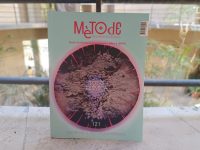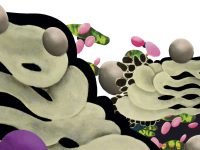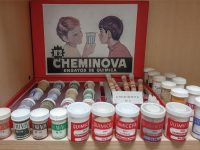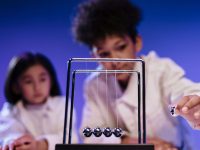Citizen science projects
An opportunity for education in scientific literacy and sustainability
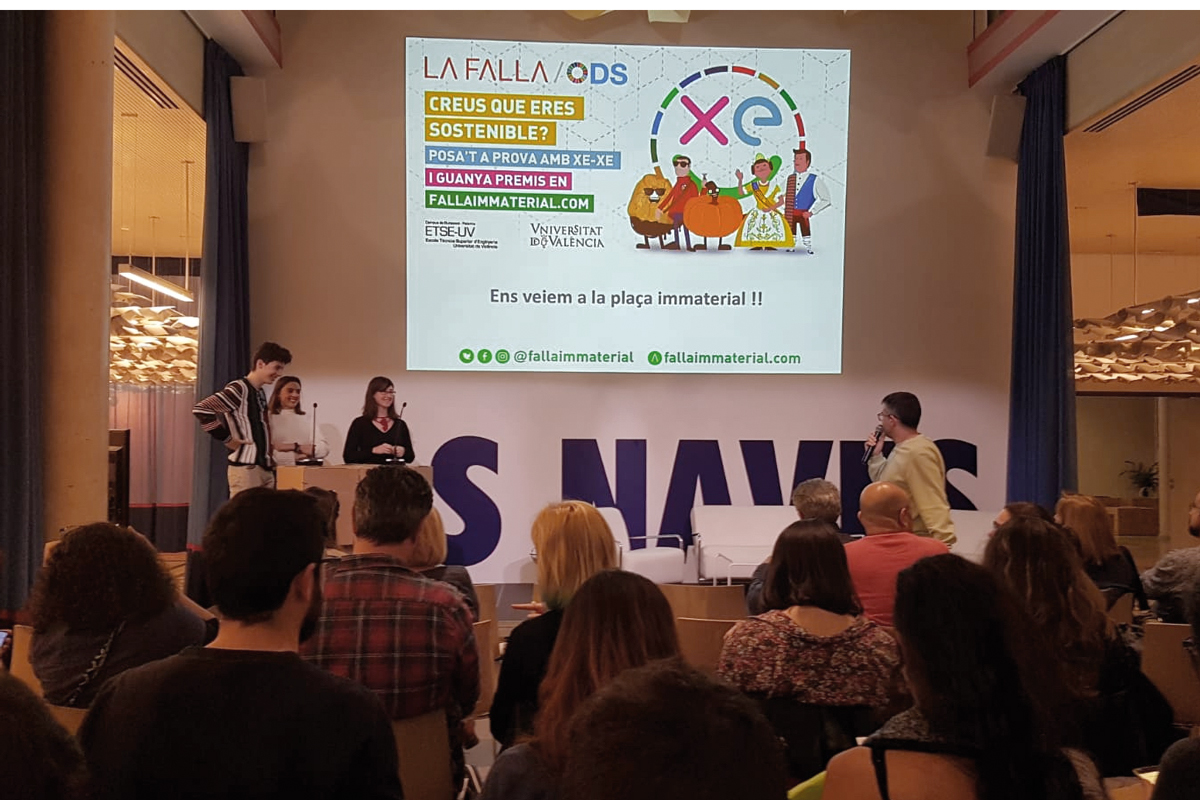
Since the term citizen science first emerged, projects involving citizens in science have increased in number and have spread to a variety of areas. Thus, citizen science is emerging as a mechanism for involving society and stimulating the population’s interest in science and contributing to their scientific literacy. Furthermore, we must also highlight the inherent contribution of citizen science projects to the attainment of the Sustainable Development Goals (SDGs). This paper reviews some examples of international citizen science projects and details active projects in Spain, from the perspective of both formal and non-formal education.
Keywords: citizen science, scientific literacy, SDGs, formal education, non-formal education.
What is citizen science?
In 1995, Alan Irwin coined the term citizen science to describe a type of collaboration between citizens and science professionals (Curtis, 2018).
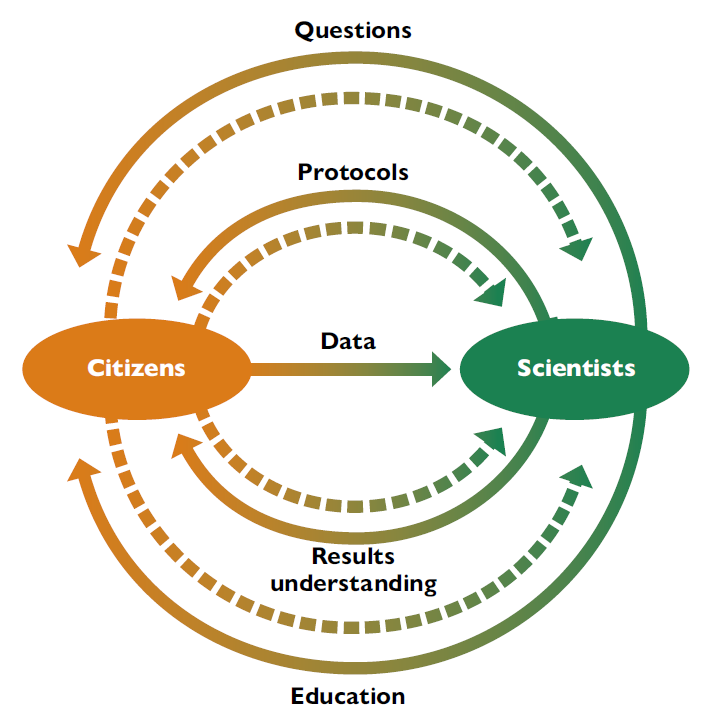
Figure 1. Bidirectional communication between the citizens and scientists for a citizen science project. Even though the citizens are responsible for providing data to the scientists, the rest of the research phases must be based on the interaction between both groups. / Source: Adapted from Devictor et al. (2010)
Thus, the White paper on citizen science for Europe (Serrano-Sanz et al., 2014) associates the term with the participation of the general public in scientific research activities, actively contributing to science with their intellectual work, related knowledge, or their own tools and resources. Citizens participate in the construction of science, working with scientific teams on specific tasks, in data collection and analysis, and the dissemination of results. However, two-way communication between citizens and the scientific community is required to generate social impact and create sustainable citizen science projects (Figure 1).
In this way, citizen science generates bidirectional communication between researchers and social stakeholders (citizens, associations, schools, etc.), leading to an improvement in the scientific literacy of the people involved and allowing them to acquire new scientific knowledge and skills (Bonney et al., 2016). At the same time, such projects provide opportunities for the scientific community to convey to society how social demands and concerns impact their work (Martínez-Ruiz et al., 2005). In this sense, we could say it plays a democratising role in science and scientific policy (Heigl et al., 2019) because it opens scientific development to society and increases, among other things, access to knowledge resulting from publicly funded research.
«The data from citizen science projects are useful to verify some SDG achievement indicators»
In view of the above, the list of social benefits of citizen science is long. In fact, we could consider citizen science to be inherently beneficial to the achievement the United Nations Sustainable Development Goals (SDGs) (Queiruga-Dios et al., 2020). This paper focuses on the contribution of citizen science to scientific literacy, by improving the scientific culture of society both via formal (school systems) and non-formal (action outside the regulated system) education.
Citizen science and scientific literacy
The scientific activities organised by museums, science fairs, or popular festivals involving the public are non-formal education scenarios in which citizen participation is promoted through projects designed in collaboration with universities or research institutes. Scientific staff collaborate with the public in data collection or in some other aspect relevant to their research; at the same time, connecting with the citizens allows scientists to reduce distances and learn more about people’s concerns (Martínez-Ruiz et al., 2005). These non-regulated activities are useful for promoting scientific literacy among citizens because democratic, evidence-based decision making requires an adequate level of scientific knowledge (COSCE, 2011).
Scientific literacy includes aspects such as understanding the nature of science and scientific projects, as well as the role of science in society and in the lives of individuals (National Research Council, 1996). But it also means that individuals must be able to identify the scientific problems underlying political decisions and express their point of view using scientific and technological arguments (Miller, 1983). This type of understanding makes it possible to exchange expectations and promote initiatives as part of a two-way exchange of information between citizens and scientists.
The effects of citizen science on the scientific literacy of participants include the perception that it is possible to contribute to the construction of science to solve a problem, improve the public’s understanding of scientific processes, increase their interest in pursuing a scientific career, positively change attitudes towards science, and improve science-related skills (Bonney et al., 2009).
Some examples of international projects contributing to scientific literacy from non-formal education settings are Mosquito Alert, COVID-PHYM, eBird, and AIRbezen. In Mosquito Alert, citizens collected photos and data for use in tiger mosquito (Aedes albopictus) research, monitoring, and control using a mobile phone application (Oltra et al., 2017). This information is then validated by entomology experts. COVID-PHYM simulates the interaction between Ebola or influenza medication and the replication of the SARS-CoV-2 virus genome to determine candidate drugs for clinical trials. To this end, thousands of volunteers around the world connected their computers to a platform between April and June 2020, resulting in a total computing power like that of a supercomputer that could be leveraged for this research. The eBird initiative by the Cornell Lab of Ornithology (USA) collects worldwide bird data, and AIRbezen is a project from the University of Antwerp (Belgium) to measure air quality by examining the leaves of strawberry plants. Spain collaborates with the latter through the Vigilantes del Aire (“Air Watchers”) project.
«Citizen science initiatives allow society to make evidence-based decisions and develop critical thinking»
The benefits of citizen science can also relate to formal education, through the implementation of classroom practices in school curricula (Kocman et al., 2020; Queiruga-Dios et al., 2020; Vitone et al., 2016). Thanks to this, students can participate from an early age in projects that improve their attitudes towards science and help to break stereotypes about scientists, increasing their interest in science and technology (Benavent et al., 2020; Queiruga-Dios et al., 2020). Likewise, other intrinsic values of citizen science, such as collaboration, problem orientation, data sharing, and the resolution of important problems for all citizens (e.g., seeking gender equality or reducing inequality) can also be transferred to educational fields. Hence, citizen science relates to sustainability education, as explained in the following section.
Citizen science and sustainability education
Sustainability or sustainable development is traditionally defined as «the use of environment and resources to meet the needs of the present without compromising the ability of future generations to meet their own needs» (Berkes et al., 2003, p. 3), but this notion has evolved beyond environmental considerations to include social and economic dimensions (Benavent et al., 2020).
Different aspects of sustainability now overlap with a wide range of areas covered by citizen science (education, gender, water and air quality, etc.). In this sense, the data from citizen science projects are useful to verify some of the SDG achievement indicators (Figure 2).
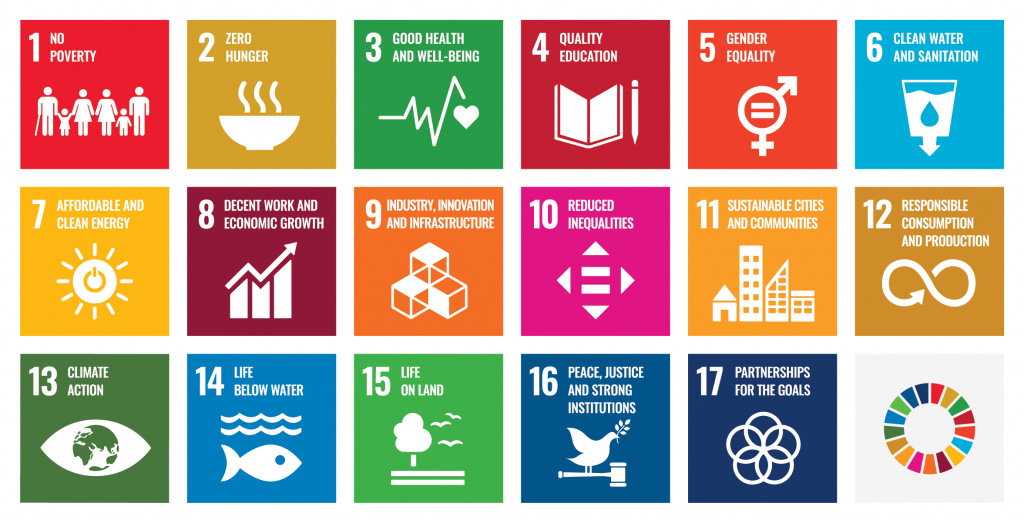
Figure 2. The image shows the 17 sustainable development goals approved by the United Nations in 2015 which were included in the 2030 Agenda for Sustainable Development in order to «end poverty, protect the planet, and ensure that all people enjoy peace and prosperity by 2030» (UNESCO, 2017). Citizen science contributes to achieving these goals through a wide range of actions undertaken in different projects. / UNESCO
The SDGs were designed and planned to be interconnected, so that contributing to one of them would also help the development of the others to achieve more sustainable societies. Education through a variety of initiatives is an essential strategy for the attainment of these goals. Such initiatives include citizen science projects working in different areas of study (Grimaldo et al., 2017; Oltra et al., 2017; Queiruga-Dios et al., 2020) and the implementation of formal and non-formal education actions contributing to the development of transversal sustainability and scientific literacy competencies, as shown in the following initiatives.
Closing the gap between science and society
In the field of non-regulated education, we can find the project La Falla Immaterial. Since 2017, this group has used the informal environment of the Las Fallas festival in Valencia (Spain) as a means to disseminate science and show some of the social applications of engineering and artificial intelligence. The different themes of each edition make it easier for their projects to go beyond the festival itself and give the work some continuity. In the 2020 edition, the project of the Escola Tècnica Superior d’Enginyeria (School of Engineering) at the University of Valencia (ETSE-UV) focused on measuring the commitment of citizens to the SDGs by having them complete a quiz with four questions delivered through a chatbot capable of having a thousand million different conversations in up to three languages (Catalan, Spanish, or English).
«Citizen science initiatives promote initiatives that allow society to make evidence-based decisions and develop critical thinking, both priorities in scientific education»
The questions covered topics such as equality, climate action, health, or local and responsible consumption; for example, «How many songs do you listen to while taking a shower?», «Do you close the tap while you brush your teeth?», or «Do you do your shopping at a mall?» The final score was transformed into a character or ninot (one of the monuments in the festival) and placed in a virtual city hall square on the project website. This character also had a deeper meaning: it was an indicator of sustainability, showing that user’s level of commitment to the SDGs. Thus, among the more than 4,300 people who answered the chatbot questions (Figure 3), 14 % showed very sustainable habits (represented with the traditional Fallas participant), 33 % showed behaviours in the right direction (pyrotechnician), 35 % needed to improve (a buñuelo fritter), and 18 % had very unsustainable habits (pumpkin).
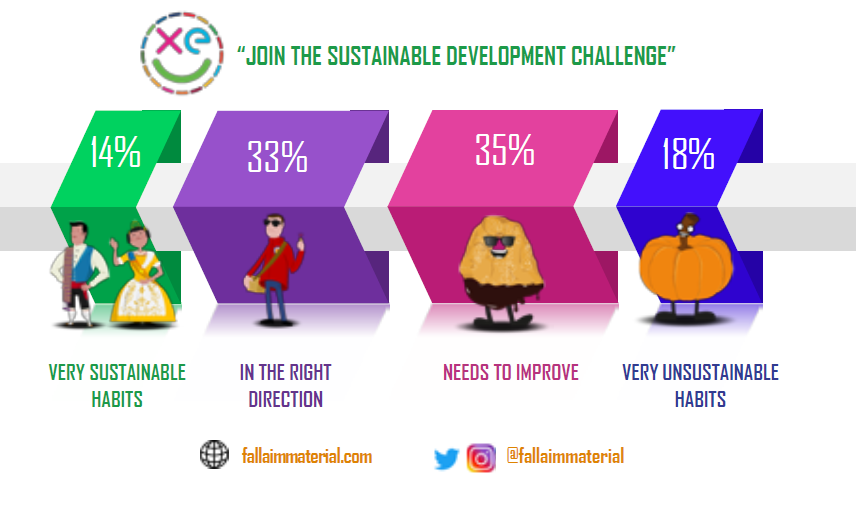
Figure 3. Chatbot citizen participation results regarding sustainable development for the La Falla Immaterial project, developed by the Escola Tècnica Superior d’Enginyeria (School of Engineering) at the University of Valencia (ETSE-UV). Through this playful activity, citizens not only contributed to a research project, but also learned more about sustainability and became more aware of their own habits. / La Falla Immaterial
Through this playful activity, citizens were able to contribute to a research project and also learn more about sustainability and increase their awareness of their own habits. Even though 50 % of the participants had good or very good habits, more than half saw that they needed to improve their daily gestures in order to become truly sustainable.
In the field of formal education, other examples of citizen science projects whose implementation in high-school classrooms has been documented (Queiruga-Dios et al., 2020; 2021), include the Odour Collect and Aqua projects. Both were carried out by the Ibercivis Foundation and funded by the Spanish Foundation for Science and Technology (FECYT, in its Spanish initialism).
The main objective of Odour Collect was to obtain geolocated data on smells to create a collaborative odour pollution map. The goal was to raise awareness of this problem and its impact on society (air quality and its effect on health) and to favour a social climate that promotes political solutions. Using a mobile phone app, citizens could geolocate odour pollution hotspots (Figure 4).
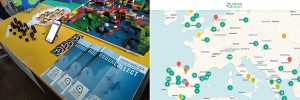
Figure 4. The data provided on the Odour Collect project website or through the mobile phone app are used to collaboratively geolocate odour pollution hotspots. Photo: Miguel Ángel Queiruga-Dios
The information obtained in this way was accessible to the public while the scientists carried out the appropriate analyses. In high-school classroom activities, participating students could work on a citizen science project related to other environmental problems – such as atmospheric pollution and global warming – with debates and other complementary educational activities (Queiruga-Dios et al., 2021).
The Aqua project, on the other hand, aimed to determine drinking water quality and create a map showing the spots where different aspects of domestic drinking water (chlorine concentration, pH, flavour, and smell) had been measured. The participants received a test tube, a tablet to measure chlorine concentration levels, a strip of paper to measure its pH, and instructions on how to carry out the test and collect the data, which was shared through an app or on the project website.
«Scientific literacy empowers society, transforms citizens’ perception of scientific activity, and encourages people to participate on science and technology decision-making»
The results were openly accessible and free to use for anyone who wanted to determine water quality in their area, region, or country by doing their own research and reaching a conclusion. In this way, a connection was established, as mentioned above, between citizens and the scientific team, the former in the sampling, the data collection effort, and in large-scale visualisation of the results.
The curricular implementation of these projects in the classroom brings many of the social benefits of citizen science closer to students: they acquire a scientific culture in aspects that are not usually developed in classrooms (in relation to, for instance, the sociology of science), thanks to the participation of a real scientist, complemented with reflection and debate activities. Thus, from a school perspective, citizen science projects can be seen as a way to implement many aspects related to the SDGs in formal education, as well as others related to scientific education (Queiruga-Dios et al., 2020).
Conclusions
Citizen science initiatives can enhance the scientific literacy of our society through formal and non-formal educational actions. In particular, they promote initiatives that allow society to make evidence-based decisions and develop critical thinking, both priorities in scientific education. Such literacy empowers society, transforms citizens’ perception of scientific activity, and encourages people to participate on science and technology decision-making by connecting them with scientists and scientific institutions. In addition, the wide variety of topics researched using citizen science (Sanz et al., 2020) allows participants to connect with their individual interests, generating sustainable projects that impact society and which can be incorporated into educational curricula.
The projects introduced in this article (La Falla Immaterial, Odour Collect, and Aqua) show that the data obtained through the individual use of apps, websites, and mobile devices can contribute to the well-being of all citizens, thereby making social applications in engineering, information and communications technologies, and artificial intelligence more visible. These are open projects, which aim to change traditional stereotypes and modify the public perception of science while inviting citizens to reflect upon their daily habits to create a more sustainable society that is better prepared to achieve the SDGs.
References
Benavent, X., De Ves, E., Forte, A., Botella-Mascarell, C., López-Iñesta, E., Rueda, S., Roger, S., Perez, J., Portalés, C., Dura, E., García-Costa, D., & Marzal, P. (2020). Girls4STEM: Gender diversity in STEM for a sustainable future. Sustainability, 12(15), 6051. https://doi.org/10.3390/su12156051
Berkes, F., Colding, J., & Folke, C. (Eds.). (2003). Navigating social-ecological systems: Building resilience for complexity and change. Cambridge University Press. https://doi.org/10.1017/CBO9780511541957
Bonney, R., Ballard, H., Jordan, R., McCallie, E., Phillips, T., Shirk, J., & Wilderman, C. (2009). Public participation in scientific research: Defining the field and assessing its potential for informal science education. Center for Advancement of Informal Science Education (CAISE). https://files.eric.ed.gov/fulltext/ED519688.pdf
Bonney, R., Phillips, T. B., Ballard, H. L., & Enck, J. W. (2016). Can citizen science enhance public understanding of science? Public Understanding of Science, 25(1), 2–16. https://doi.org/10.1177/0963662515607406
COSCE. (2011). Informe ENCIENDE. Enseñanza de las Ciencias en la Didáctica Escolar para edades tempranas en España. Editorial Rubes. https://www.cosce.org/pdf/Informe_ENCIENDE.pdf
Curtis, V. (2018). Online citizen science and the widening of academia. Palgrave Macmillan. https://doi.org/10.1007/978-3-319-77664-4
Devictor, V., Whittaker, R. J., & Beltrame, C. (2010). Beyond scarcity: Citizen science programmes as useful tools for conservation biogeography. Diversity and Distributions, 16(3), 354–362. https://doi.org/10.1111/j.1472-4642.2009.00615.x
Grimaldo, F., Sánchez, C. R., López-Iñesta, E., Vicente, J. E., & Querol, E. Q. (2017). Ciència ciutadana contra prejudicis lingüístics: El projecte Milmots.eu. Llengua, Societat i Comunicació, 15, 48–53. https://doi.org/10.1344/LSC-2017.15.6
Heigl, F., Kieslinger, B., Paul, K. T., Uhlik, J., & Dörler, D. (2019). Opinion: Toward an international definition of citizen science. Proceedings of the National Academy of Sciences, 116(17), 8089–8092. https://doi.org/10.1073/pnas.1903393116
Kocman, D., Števanec, T., Novak, R., & Kranjec, N. (2020). Citizen science as part of the primary school curriculum: A case study of a Technical Day on the topic of noise and health. Sustainability, 12(23), 10213. https://doi.org/10.3390/su122310213
Martínez-Ruiz, F., Bautista-Arnedo, M., & del-Pino-Ruiz, J. (2005). Educación científica, sociedad y televisión. Comunicar, 25. https://doi.org/10.3916/C25-2005-203
Miller, J. D. (1983). Scientific literacy: A conceptual and empirical review. Daedalus, 112(2), 29–48. https://www.jstor.org/stable/20024852
National Research Council. (1996). National science education standards. The National Academy Press. https://doi.org/10.17226/4962
Oltra, A., Palmer, J. R., & Bartumeus, F. (2016). Objectiu: Atrapar el tigre. Una plataforma de ciència ciutadana per a combatre el mosquit tigre. Metode, 88, 11–15.
Queiruga-Dios, M. Á., López-Iñesta, E., Diez-Ojeda, M., Sáiz-Manzanares, M. C., & Vázquez Dorrío, J. B. (2020). Citizen science for scientific literacy and the attainment of sustainable development goals in formal education. Sustainability, 12(10), 4283. https://doi.org/10.3390/su12104283
Queiruga-Dios, M. Á., López-Iñesta, E., Diez-Ojeda, M., Vázquez-Dorrío, J. B., & Pachamé, A. (2021). Ciencia ciudadana Odour Collect en el aula de Educación Secundaria Obligatoria utilizando la metodología ABP. 29 Encuentros de Didáctica de las Ciencias Experimentales.
Sanz, F., Pelacho, M., Clemente, J., Ibáñez, M., Guardia, L., Lisbona, D., Val, V., Embid, A., Castelo, V., Arias, R., Salas, N., Ruiz, G., Tarancón, A., Ferrer, A., Cuartielles, D., García, C., Perla, P., Barral, M., Gavete, B., … Sevilla-Callejo, M. (2020). Informe del Observatorio de la Ciencia Ciudadana 2019/2020. https://ciencia-ciudadana.es/informe-del-observatorio-de-la-ciencia-ciudadana-en-espana-2020/
Serrano-Sanz, F., Holocher-Ertl, T., Kieslinger, B., Sanz García, F., & Silva, C. G. (2014). White paper on citizen science for Europe. https://ec.europa.eu/futurium/en/system/files/ged/socientize_white_paper_on_citizen_science.pdf
UNESCO. (2017). Education for sustainable development goals: Learning objectives. UNESCO. https://unesdoc.unesco.org/ark:/48223/pf0000247444
Vitone, T., Stofer, K., Steininger, M. S., Hulcr, J., Dunn, R., & Lucky, A. (2016). School of ants goes to college: Integrating citizen science into the general education classroom increases engagement with science. Journal of Science Communication, 15(01), A03. https://doi.org/10.22323/2.15010203
Acknowledgements:
This work was carried out with the support of research project RTI2018-095820-B-I00 (MCIU/AEI/FEDER, EU), UV-SFPIE_PID20-1350001, ETSE-UV, and UV’s UCC+i.

